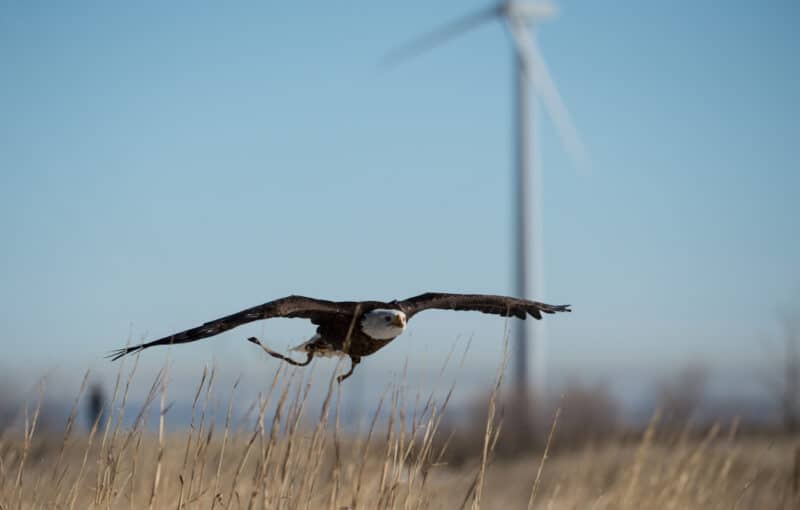Eagle conservation is an issue that has long been of great importance to REWI and its Partners, Friends, and supporters. Collectively, we have been deeply engaged for years on collaborative efforts to understand the challenges and develop science-based solutions to mitigate impacts of wind energy on eagles–including comments made to the U.S. Fish and Wildlife Service (FWS) on eagle conservation as well as other topics.
The proposed rule “Permits for Incidental Take of Eagles and Eagle Nests” released by the FWS on September 30 is an important step toward advancing conservation and sustainable wind energy. In this draft rule, the FWS is proposing additional guidance regarding ways to conserve eagle populations and help support further wind energy development, which is critical to addressing climate change.
In that spirit, we offer a few preliminary observations:
- The general permit option presented in the proposed rule emphasizes siting – an important step in the mitigation hierarchy (avoid, minimize, and compensation for take).
- The revised rule recognizes best management practices (BMPs), such as removal of scavenging opportunities, burying connector lines, or operations personnel driving at slow speeds, to reduce risk exposure of eagles. The past decade has also seen progress in developing and testing the effectiveness of technologies to detect and deter eagles that further minimize risk exposure of eagles to turbine collisions.
- Retrofitting transmission power poles is acknowledged by the FWS as the only approved compensatory mitigation strategy option for offsetting eagle take. The draft EIS accompanying the proposed rule recognizes that lead abatement and vehicle collision strike mitigation options are under evaluation and consideration for approval. REWI recently completed work to update these options and is prepared to support testing and application of these strategies.
REWI is on the front lines of this and other renewable energy-wildlife issues, and we continue to collaborate with our Partners, Friends, and supporters to advance the state of the science on key topics. These efforts have produced novel risk minimization and compensatory mitigation options that enhance conservation and support the expansion of carbon-free renewable energy. Noteworthy recent REWI accomplishments include:
- Updating and refining our mitigation models, which include user interfaces that integrate resource equivalency analysis (REA) into estimate of mitigation efficacy.
- Preparing a draft manuscript regarding vehicle collision strike reduction to be submitted for publication before the end of the year.
- Updating our lead abatement model; to be published as an expert-reviewed REWI technical report.
- With support from the U.S. Department of Energy, evaluating minimization technologies, including IdentiFlight and DTBird.
REWI’s mission is to help pave the way for a sustainable, clean energy future where renewable energy and wildlife can both thrive. By engaging the stakeholder community in discussions, research projects, and investing in science, we are developing solutions. REWI and our Partners, Friends, and colleagues, including the FWS and state agencies, have informed strategies to foster wind energy production and other renewables while conserving wildlife.
